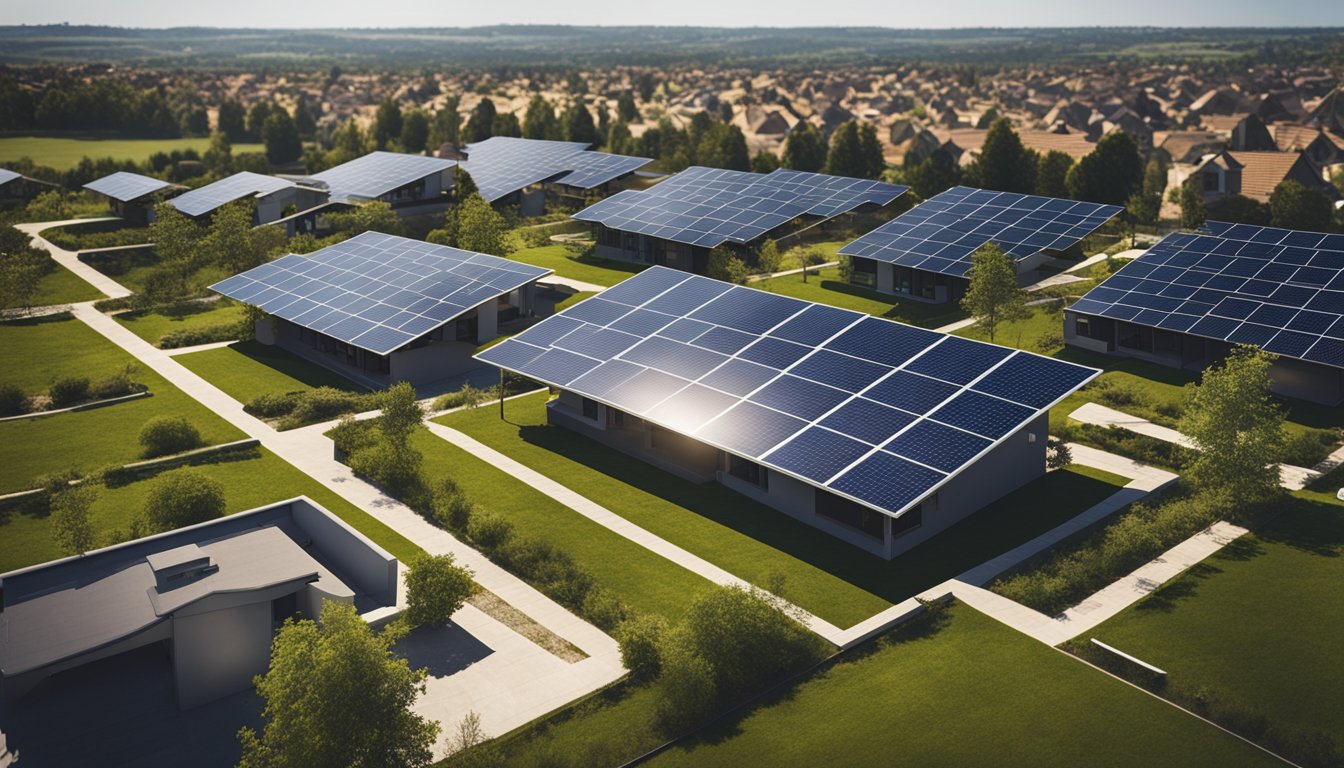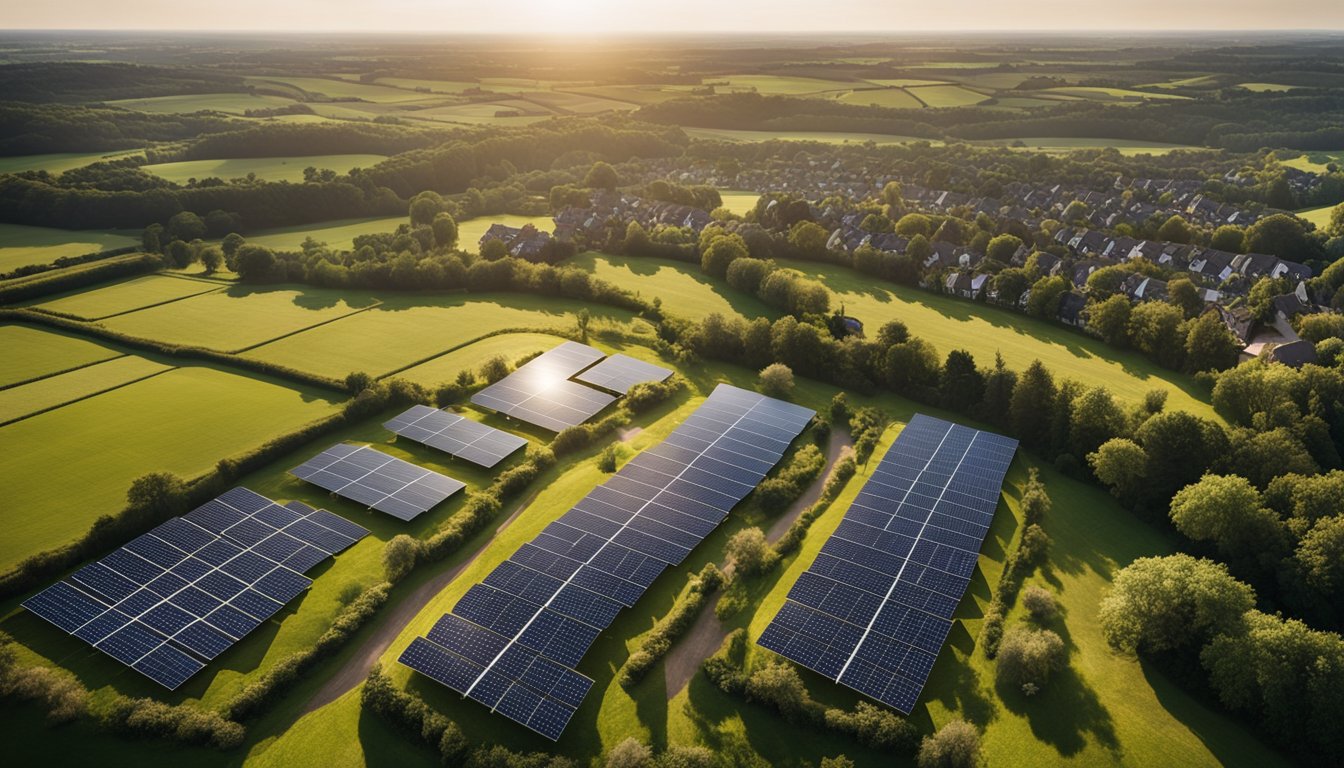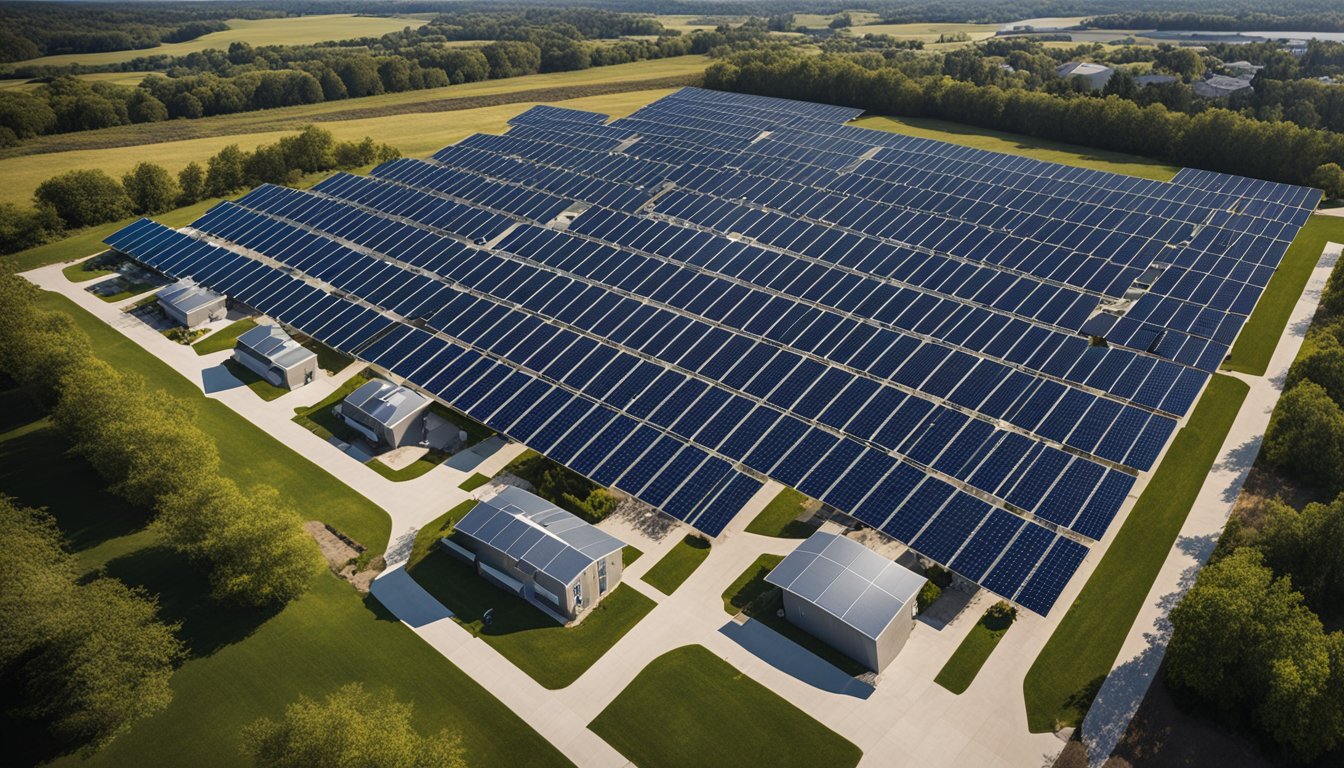Late updated: 05 Jul 2024 08:07
Written by: Eleanor Hartman
The Growth Of Community Solar Projects In The UK: Expanding Renewable Energy Access
Community solar projects in the UK are experiencing a significant resurgence, playing a crucial role in our nation's transition towards a net-zero economy. These initiatives not only contribute to reducing carbon emissions but also foster community engagement and local economic growth. The latest developments reveal substantial investments and expansions in community energy schemes, clearly demonstrating the sector's vital importance.

The UK community energy sector raised £11.9 million for new projects, signalling robust investment and heightened public interest in renewable energy sources. In particular, solar farms have seen considerable expansion across England, Wales, and Scotland. This growth is further evidenced by the largest ever transfer of community energy assets, which added 20% to the total community-owned solar capacity in England and Wales. The surplus funds generated are reinvested into local projects, reinforcing long-term sustainability goals and community benefits.
With major projects underway, such as Nottingham's Great North Road and new initiatives in Hartlepool, the emphasis on renewable energy has never been stronger. These projects are not just about generating power; they symbolise our collective commitment to combating climate change and supporting local economies. By focusing on community-led energy solutions, we can achieve a more sustainable and equitable future for all.
Key Takeaways
- Community solar projects in the UK are expanding significantly.
- The sector raised £11.9 million for new projects, highlighting strong investment.
- Local economies and sustainability goals benefit from community-led energy solutions.
Community Solar Project Overview

Community solar projects in the UK are significantly contributing to both environmental sustainability and local economic growth. These initiatives empower communities to generate clean energy and reduce their carbon footprint through collective efforts.
What Are Community Solar Projects?
Community solar projects are jointly owned renewable energy installations where local people come together to invest and share the benefits. These projects utilise solar panels to generate electricity, which is often sold back to the grid.
We see initiatives managed by community energy groups that aim to involve the local community in decision-making processes. The focus is on shared responsibility and the equitable distribution of profits. These projects highlight the importance of local engagement in achieving broader environmental goals.
Benefits to Local Communities and the Environment
Community solar projects bring multiple benefits to local communities and the environment. First, they reduce carbon emissions by generating clean energy, helping the UK move towards its net zero targets.
Local people benefit economically too. For instance, an average of 70% of community energy expenditure remains within the community, fostering local economic development. Additionally, these projects often create jobs, from installation to maintenance, and provide educational opportunities about renewable energy.
Environmental benefits include greener localities and reduced reliance on fossil fuels. Community-owned projects also promote energy independence, empowering regions to contribute directly to sustainable energy solutions.
Comparison with Other European Models
When comparing UK community solar projects to other European countries, a few differences emerge. In Germany, for example, community energy initiatives are highly advanced, with robust governmental support making community solar widespread. German projects often integrate more participants and capital compared to those in the UK.
Other European models like those in Denmark majorly involve cooperatives, where profits are reinvested into expanding clean energy infrastructure. These countries usually have more comprehensive policies supporting community projects, leading to higher overall community engagement.
In contrast, UK projects are evolving, but face challenges such as limited initial funding and slower adoption rates. Learning from successful European models could provide valuable insights to bolster the UK’s community solar sector.
Implementation and Impact

Community solar projects in the UK present both challenges and opportunities, necessitating clear strategies for success. Here, we explore significant hurdles and proven approaches, along with illustrative case studies.
Challenges and Opportunities
One major challenge involves the financial and bureaucratic barriers due to the UK’s centralised banking and energy systems. Community groups seeking to establish renewable energy projects often face hurdles in securing funding and navigating regulations.
There are opportunities too. The growth of community energy funds has helped. Partnerships with local authorities and private investors have provided necessary financial backing. By overcoming these initial barriers, communities can achieve significant CO2 reductions and enhance energy security.
Strategies for Successful Community Solar Initiatives
Key strategies include forming strong partnerships and securing diverse funding sources. Collaborating with local authorities, businesses, and energy companies can help distribute costs and benefits more evenly.
Feasibility studies and detailed planning are essential. By assessing local renewable energy capacity and considering innovative solutions like battery storage, we can optimise energy production. Crowdfunding has also emerged as a viable option, allowing for broad-based community investment.
Case Studies of Successful Projects
One notable example is the Brighton Energy Co-op, which has installed solar PV on several community buildings, including schools and businesses. Through effective use of crowdfunding, they've engaged local communities and investors, showcasing the power of community-owned renewables.
Another successful case is the Edinburgh Community Solar Co-operative. This project has deployed rooftop solar on public buildings, improving sustainability and offering returns to local investors. These initiatives demonstrate how community-led projects can effectively contribute to net zero targets whilst fostering local economic growth.
Frequently Asked Questions

Here, we address some common inquiries about community solar projects in the UK, covering topics from legislation's impact to financial models and environmental benefits.
How has the legislation affected the increase of community solar projects in the UK?
Legislative support has played a crucial role in the growth of community solar projects. Government incentives such as the Feed-in Tariff (FiT) have encouraged investments in solar energy. More recently, the Smart Export Guarantee (SEG) has continued this momentum by supporting small-scale solar installations in communities.
What factors contribute to the success of community-owned renewable energy initiatives?
Successful community solar projects often hinge on strong local support and a well-defined project plan. Effective collaboration between community members, transparent governance structures, and access to technical expertise also significantly enhance project viability. Availability of funding and incentives can further boost success rates.
How does the UK's solar irradiance compare to other countries, and what does that mean for the potential of solar energy?
The UK has lower solar irradiance compared to countries closer to the equator, such as Spain or Australia. However, modern solar technologies can still efficiently generate energy in less sunny conditions. This means community solar projects can still thrive despite the UK's relatively modest sunlight levels.
Who are the key players in the UK's community solar energy market?
Key players include local councils, community energy groups, and organisations like Community Energy England. These entities often collaborate with private sector companies offering technical and financial support. Non-profit organisations also play a critical role by providing resources and advocacy for community-led solar initiatives.
What financial models are most effective for funding community solar projects in the UK?
Effective financial models range from cooperative ownership structures to community shares and crowd-funding. Grants and loans from government bodies and financial institutions also provide essential funding. Partnerships with private investors who are dedicated to sustainability can offer additional capital and expertise.
How do community solar projects in the UK impact local economies and the environment?
Community solar projects generate local employment opportunities during both the installation and maintenance phases. They also help reduce energy costs for local residents by providing them with access to cheaper, renewable energy. Environmentally, these projects contribute significantly to reducing carbon emissions and promoting sustainable energy practices.